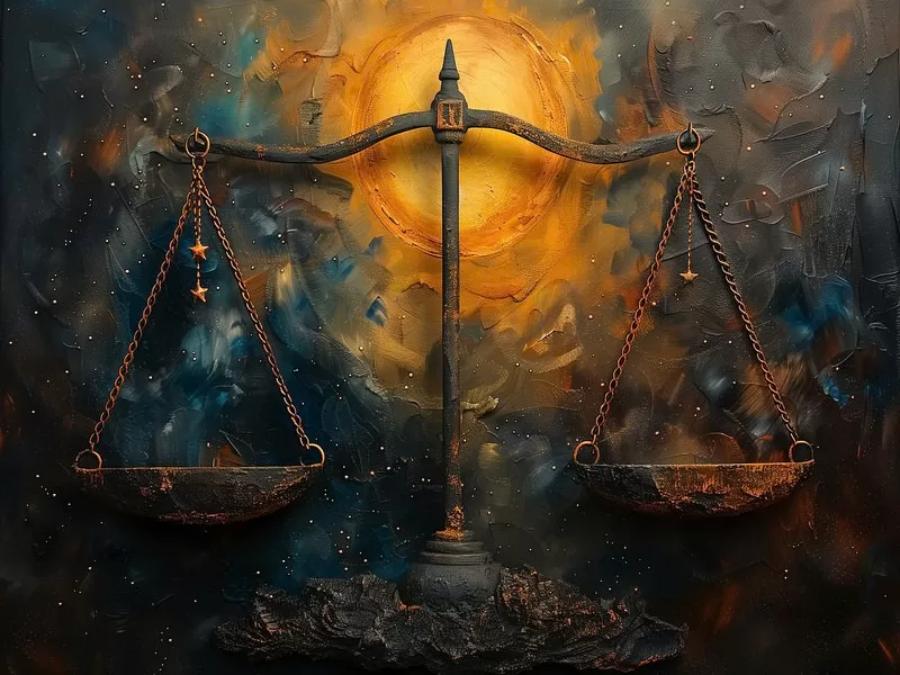Best Selling Products
Golden Ratio In Design And Its Application In Life
Nội dung
- 1. What is the golden ratio?
- 2. History of the golden ratio
- 3. How to calculate the golden ratio
- 4. Visual geometry associated with the golden ratio
- 4.1 Golden ratio rectangle
- 4.2 Golden ratio spiral
- 4.3 Golden ratio triangle
- 4.4 Phi Grid Golden Ratio
- 5. Applying the golden ratio to life
- 5.1 Applications in construction architecture
- 5.2 Application in interior design
- 5.3 Application in logo design
- 5.4 Application in painting
- 6. Conclusion
From great structures like the Giza pyramids to famous paintings by artists like Leonardo da Vinci, the golden ratio is always present, creating attraction and harmony. In modern life, the application of the golden ratio is also widespread in graphic design, fashion, architecture and many other fields, making products more attractive and accessible to consumers. In this article, Sadesign will explore with you more deeply about the golden ratio, its role in design and interesting applications in everyday life.

From great structures like the Giza pyramids to famous paintings by artists like Leonardo da Vinci, the golden ratio is always present, creating attraction and harmony. In modern life, the application of the golden ratio is also widespread in graphic design, fashion, architecture and many other fields, making products more attractive and accessible to consumers. In this article, Sadesign will explore with you more deeply about the golden ratio, its role in design and interesting applications in everyday life.
1. What is the golden ratio?
The Golden Ratio, also known as the Golden Ratio, is a magical mathematical concept that has a value of approximately 1.618, denoted by the Greek letter Φ (phi). It is not simply a number, but also a principle that regulates harmony and balance in design and art. In particular, the golden ratio is closely related to the Fibonacci sequence, a famous series of numbers in mathematics, starting with 0 and 1, where each subsequent number is the sum of the previous two numbers. When calculating the ratio between two consecutive numbers in this series, it is found that the result gradually approaches the number 1.618, which is the golden ratio.
The golden ratio is not only found in theory, but is also present everywhere in nature. From the shape of flowers, the structure of seashells to the proportions of the human body, the golden ratio creates a balance that is easily perceived by the human eye. That is why many artists and designers have applied this ratio to create works that are visually appealing and harmonious.
Not only in nature, the golden ratio is also strongly applied in art and architecture. Classic works such as Leonardo da Vinci's painting "Vitruvian Man" or many great works such as the Pyramids of Giza all show the presence of this ratio. It is like a mysterious aesthetic law, always attracting people to explore.
.png)
2. History of the golden ratio
The history of the golden ratio dates back to around 300 BC, when the Greek mathematician Euclid first mentioned it in his work “Elements.” Although he did not call it the “golden ratio,” Euclid recognized its special properties in geometry. Over the centuries, mathematicians and philosophers such as Pythagoras discovered and recognized the value of the golden ratio, but it was not until the 16th century that it became widely known.
In 1509, Italian mathematician Luca Pacioli introduced the golden ratio in his book “De Divina Proportione”. He described the ratio as a symbol of harmony in nature, and his book was illustrated by Leonardo da Vinci, making the golden ratio an important part of art and design at that time. This combination of mathematics and art ushered in a new era where the golden ratio was not only a concept but also a source of inspiration for generations of artists and designers.
To this day, the golden ratio continues to fascinate humanity. It appears in fields ranging from art, architecture to graphic design, affirming that harmony and balance are always essential elements in every creation. Although there is no clear scientific evidence for the superiority of the golden ratio, it is undeniable that it has contributed to the creation of great works of art and architecture, enriching human culture and history.
3. How to calculate the golden ratio
To calculate the golden ratio in design, we need to identify a line segment and divide it into two parts so that the ratio between them follows the rule of the golden ratio. Specifically, let's say we have a line segment AB, in which A is the longer segment and B is the shorter segment. It is important that the ratio between the total length A + B and A must be equal to the ratio between A and B.
The general formula for calculating the golden ratio is represented as follows:
.png)
In which, φ (Phi) represents the golden ratio. To visualize it more easily, you can start with a line of any length, then divide that line into two parts so that the ratio between the long part and the short part achieves the golden ratio. This is a simple but effective way to apply the golden ratio to design.
Using the golden ratio not only helps create balance but also brings a sense of harmony to your design products. By following this formula, you can enhance your ability to attract and create a strong impression on your viewers.
4. Visual geometry associated with the golden ratio
Here are some visual geometries related to the golden ratio:
4.1 Golden ratio rectangle
The golden rectangle is one of the most basic and common applications of the golden ratio. It is a rectangle whose long side to short side ratio is 1.618. When a golden rectangle is divided into a square and a smaller rectangle, the remaining part retains the golden ratio. It is this harmony that makes a layout based on the golden rectangle more pleasing and attractive to the eye.
The golden ratio rectangle is more pleasing and appealing to the eye, thanks to its balanced structure. Designers often use this rectangle to create attractive layouts in advertisements, websites or any graphic products. These layouts not only attract the eye but also make the viewer feel comfortable and easily receive the message.
The golden ratio rectangle is not only limited to graphic design but also appears in architecture and art. Great works such as the Parthenon or famous paintings all demonstrate the presence of the golden ratio, proving the power and beauty it brings.
.png)
4.2 Golden ratio spiral
The golden spiral, also known as the Fibonacci spiral, is created by drawing circular arcs within a series of golden rectangles. When a logarithmic spiral touches the edges of these rectangles, it creates a harmonious curve that naturally guides the eye. This arrangement is often found in nature, such as seashells, sunflowers, and the Milky Way.
Spirals are not only aesthetically pleasing, but they also create a sense of movement and flow. This is important in design, where the direction of the viewer’s gaze is a key factor. The golden ratio spiral can be used in logos, posters, or advertisements, where guiding the eye is essential.
The presence of spirals in nature also emphasizes the universality of the golden ratio. Scientists and artists have recognized that spirals are not only beautiful but also optimal for growth and development. This makes the spiral a powerful symbol of natural beauty.
4.3 Golden ratio triangle
The golden triangle is a more complex structure but is very useful in design, especially when using diagonals to divide the layout. A triangle is considered to have the golden ratio when the ratio between the base and the side follows the ratio of 1:1.618. This helps create visual balance and brings a high aesthetic effect to the design layout.
The golden triangle is often used to create focal points in a composition, directing the viewer’s eye to important elements. Designers often apply this triangle in graphics, architecture, and art to create attractive and impressive works.
The versatility of the golden triangle allows it to be used in a variety of contexts. From designing book covers to creating logos, triangles are not only aesthetically pleasing but also help optimize space and layout. This makes them a valuable tool in the hands of creative designers.
.png)
4.4 Phi Grid Golden Ratio
The Phi Grid is an application of the golden ratio in composition design. This concept is similar to the Rule of Thirds in photography, where the frame is divided into parts in a 1:3 ratio to help arrange the composition more reasonably and attractively. In graphic design, architecture or logos, applying the Phi Grid helps ensure harmony, balance and aesthetics for the work.
By dividing a layout into sections using the golden ratio, Phi Grid helps designers identify focal points and naturally direct the viewer’s gaze. Important elements are placed at the intersections of the grid, creating interest and balance in the overall composition.
Using Phi Grid is not just a technique but an art. It allows designers to be creative while ensuring that every element in the work is closely connected. As a result, Phi Grid has become an indispensable part of the modern design process.
5. Applying the golden ratio to life
The golden ratio is not only a mathematical concept but also a powerful design principle that can be applied in many different areas of life. From architecture and interior design to logo design and painting, the golden ratio brings balance and harmony, making spaces and products more attractive. Here are some typical applications of the golden ratio in daily life.
5.1 Applications in construction architecture
The golden ratio has been used in architecture for a long time to create balance and aesthetics for buildings. Famous buildings such as the Pyramids of Giza, the Parthenon in Greece, and even modern buildings all use this ratio to create a harmonious layout. The application of the golden ratio helps buildings stand out and attract the eye, creating a pleasant feeling for the viewer.
In the interior design of a room, architects often divide the space in a ratio of 2/3 and 1/3. The majority will be for the main furniture such as sofa, bed, desk, while the smaller part will play a supporting role, making the space more balanced. The golden ratio also helps architects divide the space reasonably, from arranging windows, stairs to designing the facade, creating comfort and ease for users.
A project that uses the golden ratio is not just a structure, but also a work of art. Incorporating the golden ratio in design creates a sense of harmony, making the project sustainable and of high aesthetic value.
.png)
5.2 Application in interior design
In interior decoration, the golden ratio helps spaces become more harmonious and attractive. Designers often use golden rectangles to arrange furniture, from cabinets, tables and chairs to the arrangement of light and color in the room. This balance not only makes the space comfortable but also helps optimize the functionality.
The golden ratio also helps in choosing the size of furniture. For example, a table can have a length and width according to the golden ratio to create balance with the overall space. In addition, dividing the display area and arranging decorative items according to this rule helps the space become attractive without being confusing.
However, when applying the golden ratio to interior design, it is not necessary to follow the exact number 1.618. Flexibility in application will help the space become more natural, avoid a feeling of rigidity and create a comfortable living space.
5.3 Application in logo design
The golden ratio plays an important role in creating iconic logos. Many famous brands such as Apple, Pepsi, Twitter have applied this ratio in their logo designs to achieve balance and visual appeal. A logo designed according to the golden ratio helps ensure a reasonable layout, from size, spacing between elements to color distribution.
This not only makes the logo beautiful but also creates a strong brand identity, making it easy for customers to remember. Brands often use the golden ratio to create more attractive advertising models, impressing consumers at first sight.
In addition to logos, the golden ratio is also used in product packaging design, helping to create balance and higher aesthetics. Using the golden ratio in packaging design not only makes the product stand out on the shelf but also creates a sense of trust for consumers.
.png)
5.4 Application in painting
Since the Renaissance, great artists have used the golden ratio to create masterpieces. Leonardo da Vinci, Michelangelo, Salvador Dalí all used this ratio to determine the composition of their paintings, creating harmony in every detail. One of the typical examples is Leonardo da Vinci's Mona Lisa, the face of the character in the painting is composed according to the golden ratio, helping to create perfect balance.
Similarly, in Michelangelo’s The Creation of Adam, the golden ratio is also used to define the distance between God and Adam, highlighting the main point of the painting. The use of the golden ratio in painting not only brings beauty but also creates deep emotions for the viewer.
The golden ratio in painting helps artists create works of art that come to life, making each painting a part of art history. The presence of the golden ratio in great works of art has proven that this principle can create masterpieces with timeless appeal.
6. Conclusion
The golden ratio is not only an abstract concept but also a powerful tool in design and art. Over the centuries, it has proven its value in creating harmony and attraction. With the upgraded Canva tool at Sadesign, you will have the opportunity to create publications with the perfect golden ratio. Understanding and applying the golden ratio in creative work not only helps improve product quality but also creates unique experiences for users.












































